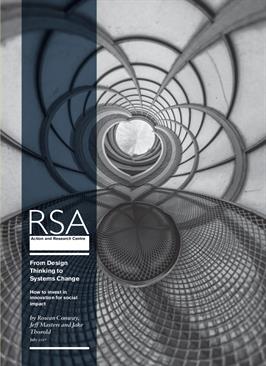Design thinking has delivered an impressive creative boon. But to tackle our most complex social challenges design methods must be augmented with systems thinking.
Design methods have reached far beyond the traditional confines of product creation, and are now deployed to create new services, policies, business models, governance structures and more. This disruptiveness has reinvented how these sectors approach innovation – ushering in an embrace of multiple possible solutions, creative responses and human centred processes.
The imperative is now to direct design methodologies towards pressing social challenges. Yet in the realm of ‘messy’ problems designers need to be acutely aware of the broader social context in which a challenge exists. To truly design for lasting social impact, designers must think systemically. This is why we have called our new report From Design Thinking to Systems Change.
A core problem we identify is the high instance of socially minded innovations ‘bouncing off’ the system they are intended to impact. Rather than scaling to create systems change, many innovations experience a ‘systems immune response’ whereby a complex set ‘barriers to change’ render the innovation unused and redundant.
To counteract this, we offer a new RSA methodology: ‘think like a system, act like an entrepreneur’. By developing a rich systemic understanding of a challenge, designers can then select the most entrepreneurial opportunities for change – pre-empting and identifying ‘hacks’ around the barriers to change.
To illustrate this the report uses the government’s Small Business Research Initiative (SBRI) as its primary case study. By applying the think like a system, act like an entrepreneur model to SBRI, we suggest that the programme could deliver more effectively on its dual mission of both generating commercial markets for innovations and delivering social impact at scale.
Achieving systems change to tackle pressing social challenges is within our capabilities, but to do so effectively will require a willingness to work in novel and adaptive ways. We hope that this report is a good place to start.
Download the report - From design thinking to system change (PDF, 3.3 MB)
pdf 3.3 MB
Contributors



